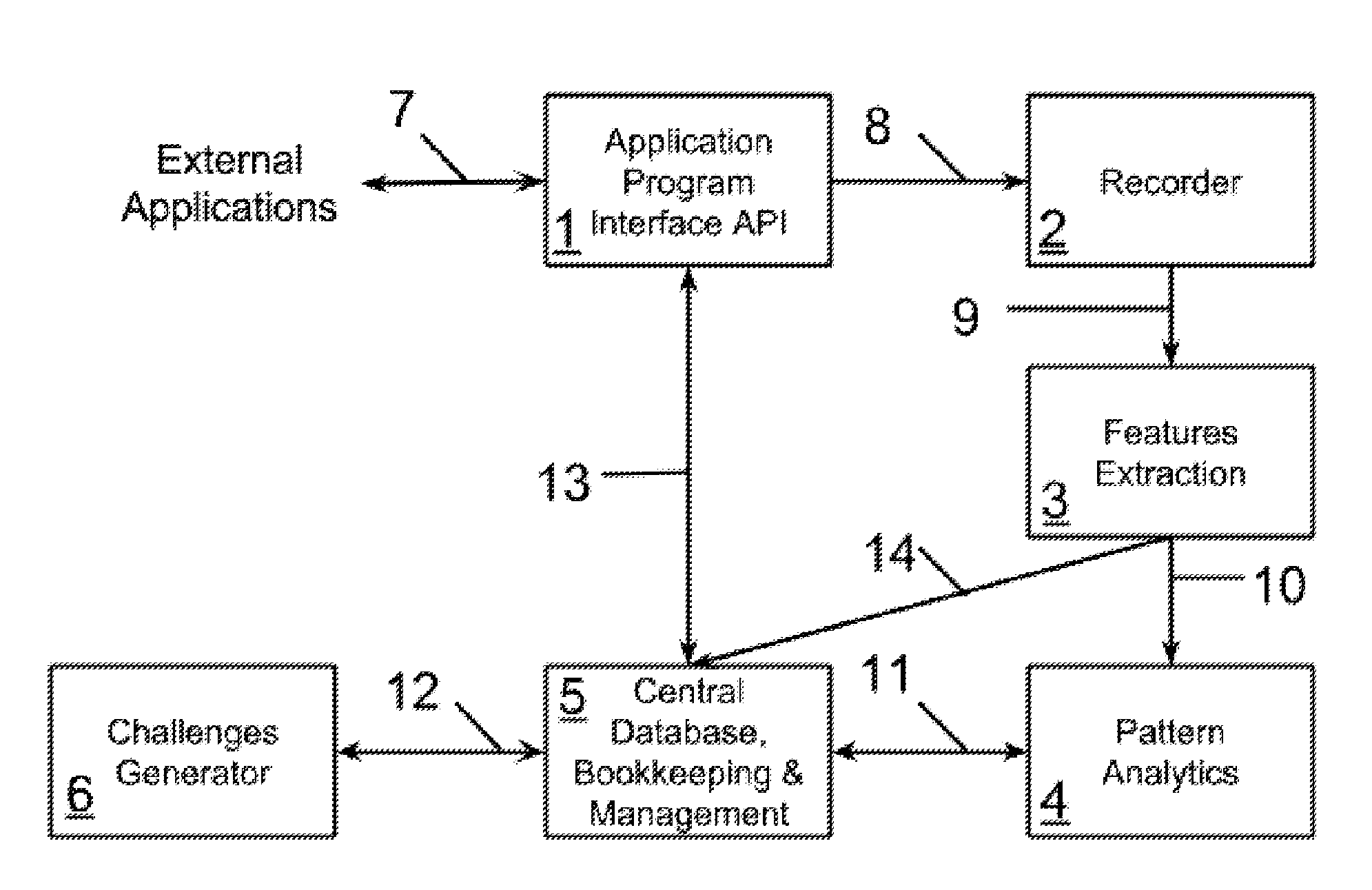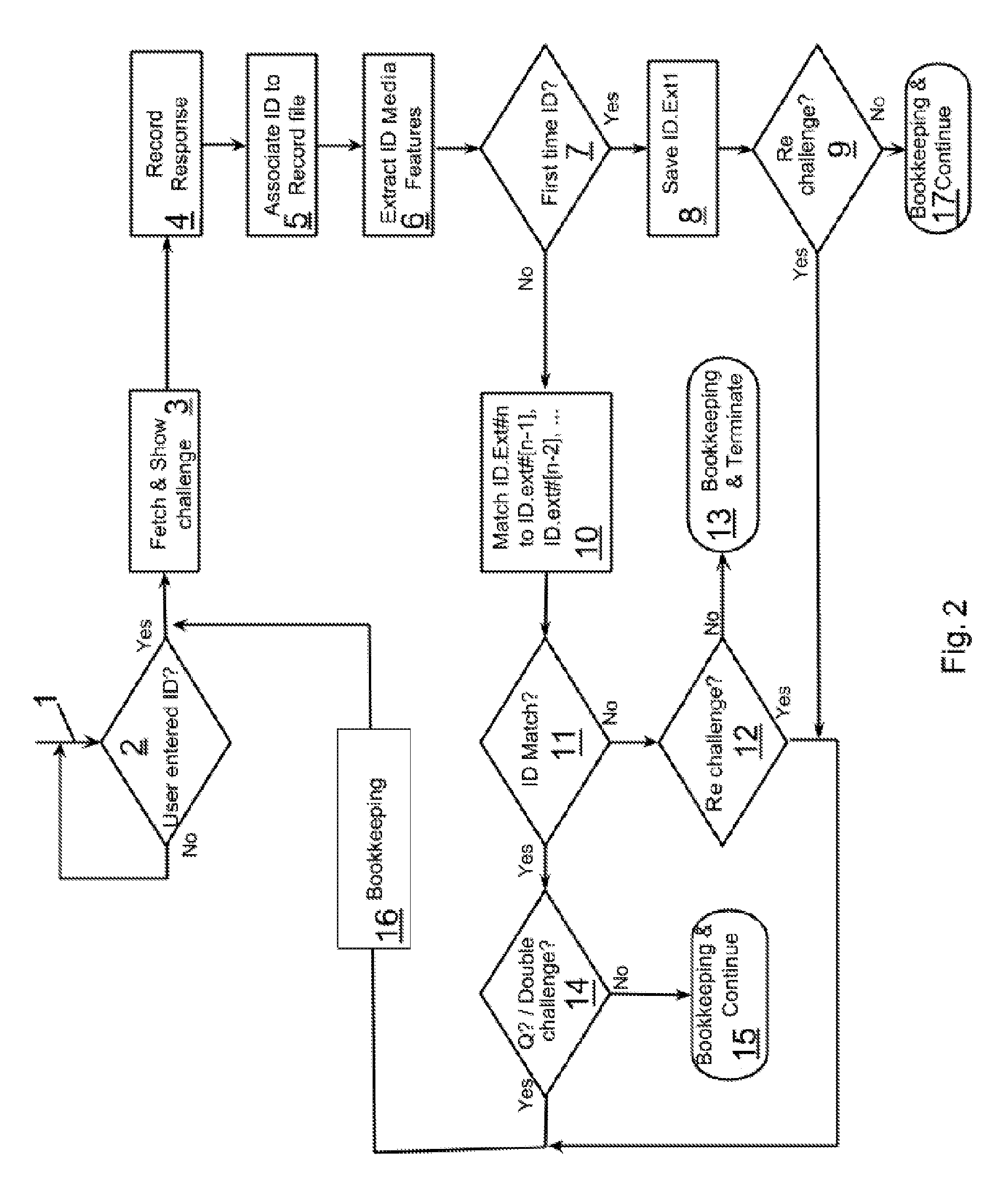Automatic Learning Multi-Modal Fraud Prevention (LMFP) System
a multi-modal fraud prevention and learning technology, applied in the field of ecommerce fraud prevention, can solve the problems of inability to accurately lack of effective means to combat impostors in ecommerce, and the inability to correctly assess the authenticity of buyers, so as to increase the probability of combating machines. the effect of hard
- Summary
- Abstract
- Description
- Claims
- Application Information
AI Technical Summary
Benefits of technology
Problems solved by technology
Method used
Image
Examples
Embodiment Construction
Glossary of Terms
[0054]As used herein, the term “buyer's authentication data” refers to one or more of the following user's data: a user's voice live or recorded; a still picture, a motion picture, and / or a video displaying a user's face, object, or item; a still picture or scan of a user's optical iris; and / or, a still picture or scan of a user's finger(s) and / or palm. This data may be recorded or generated.
[0055]As used herein, the term “user and / or buyer identifying information” refers to user / buyer contact information and / or id number and / or passport number and / or driver license number and / or email address and / or pictures and / or videos from social networks such as Facebook® and / or LinkedIn® and / or Google+® and / or Picasa® and / or voice recordings from message center such as answering machine, or the like.
[0056]As used herein, the term “signature” refers to an adaptive, infinitesimally unique pattern associated with a buyer based on historical data and current challenge sequence. S...
PUM
 Login to View More
Login to View More Abstract
Description
Claims
Application Information
 Login to View More
Login to View More - R&D
- Intellectual Property
- Life Sciences
- Materials
- Tech Scout
- Unparalleled Data Quality
- Higher Quality Content
- 60% Fewer Hallucinations
Browse by: Latest US Patents, China's latest patents, Technical Efficacy Thesaurus, Application Domain, Technology Topic, Popular Technical Reports.
© 2025 PatSnap. All rights reserved.Legal|Privacy policy|Modern Slavery Act Transparency Statement|Sitemap|About US| Contact US: help@patsnap.com



